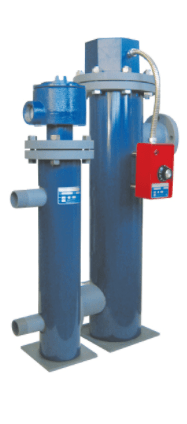Cartridge heaters contain shielded resistive heating components encased in a metal sheath. Insulation assists in optimizing heat transfer rates and isolating the heat source from the conductor’s sheath. While cylindrical cartridge heaters are the most general, the heater’s cross-section can also be a rectangle, circular, or other customized shapes.
atridge heaters provide concentrated heat to small work areas that require precise thermal control. The heater is usually mounted in a die, platen, or another machined component that transfers the heat. In other situations, the radiator is immersed entirely in a fluid medium. Or used as an electric duct heater, the sheath of the heater must be coaxial.
Or used as an Industrial heater, the sheath must be compliant with the fluid medium it touches, and the ends of the heater should be sealed.
There are some things you can and should not do to prolong the life of a cartridge heater. And, as experts in the area, we thought we’d shed some light on the subject. Here are a few pointers on how to take care of the product and avoid potential faults and errors.
Main reasons why Cartridge heaters fail before time
Cartridge heaters fail early. The heat produced in the internal wire coil is not effectively cooled down, or moisture or a foreign material seeps within the protective sheath, causing a short circuit. Inadequate heat dissipation creates a rise in internal temperatures, which can easily deteriorate the heating element.
This will happen if the machined tolerance levels are outside of an appropriate range. If the watts density is too high or the system is operated by an incompatible supply voltage.
Inadequate Fit
The most major reason for premature cartridge heater failure is inappropriate fit. They must be put into a borehole that has close tolerances. High watt density cartridge heaters are much more vulnerable since the heater’s internal temperatures will quickly increase, threatening the heating element’s survival.
Watt Density is wrong.
The heater’s watt density is crucial to its efficiency. This is a metric of thermal energy density, and the stronger the watt density, the more thermal dissipation is needed. Where thermal dissipation requirements are not met, high watt capacities will lead to early failure because the heater’s internal temperatures will surpass the limitations of the conductive heating element.
Insufficient power supply voltage
Since the resistance in a resistive circuit is constant, increasing the voltage doubles the current, thereby doubling or tripling the wattage output. Incorrectly defining the supply voltage will result in premature heater malfunction, as voltage has a major impact on the wattage.
Incorrectly defining the supply voltage will result in early heater failure because the voltage has a drastic impact on wattage and heat generation.
Tips for extending the life of a cartridge heater
Avoiding the Contamination
By using a releasing agent to facilitate Circulation heater separation from its opening, wait till the assistant is bone dry before putting the warmer into the hole. If the heater is inserted until the agent has dried, some of the moisture is generally forced into the lead end and soaks into the heater through the lead covering or the ceramic plug at that end. When this occurs, the heater is likely to malfunction as soon as electricity is added.
Moisture, fuel, or other substances on the lead wires may be wicked into the heater, allowing it to fail prematurely.
Oil or other organic substance on the heater’s lead outlet pipe will carbonize at high temperatures, creating a short from the leading to the sheath.
Check that the heating unit suits snugly.
Cartridge heaters frequently fail early because they are not the ideal size.
The element should be able to fit snugly within the mould. If it does not, heat will not be effectively transported, and the heater will continue to operate at a higher temperature than is required. Overheating may harm the appliances and decrease the heater’s lifetime over time.
Stop unnecessary cycling.
If the cartridge heat source has a greater wattage than needed, it can turn on and off quickly to retain the desired temperature. This is referred to as extreme temperature cycling. It easily oxidizes the resistance wires, resulting in heater failure.
It is also worthwhile to do experiments in order to prevent repetitive cycling. Before buying a heater, please decide the lowest available wattage to satisfy the needs of your application.
Bio-
Do you need assistance picking the correct cartridge heater?
Cartridge heaters are a tough and long-lasting piece of equipment. And, nine times out of 10, they rapidly deteriorate because the wrong scale or wattage was selected for the job. However, this is where we can help.
Our team of experts has unrivalled expertise and experience in this field. And if you need help deciding on the perfect cartridge heater for your needs, we’re still happy to assist.
We stock a wide variety of cartridge heating elements in many sizes and can provide tailored advice and feedback on the right choice for your order.
